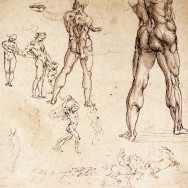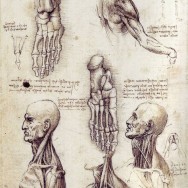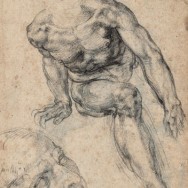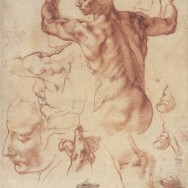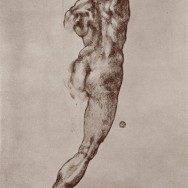Rolfing
What is Rolfing?
Rolfing is a scientific and intuitive system of balancing the physical structure in gravity. Its fundamental and unique idea is that this omnipresent force will be received optimally by a body which is organized around a truly vertical principle of support.
Read MoreWhy does Rolfing work?
Your body organizes itself in a more upright, more functional alignment. With vertical order, the true support of feet, knees, pelvis, and spine becomes realized. Every structure above is endowed with support from below, and on an instinctive level, the body understands it can relax.
Read MoreMore About Fascia
Fascia is a tough, opaque, membranous protein called collagen, functioning in the body like fabric and cables: fabric in the sense that it wraps and contains every part of the body. All the muscles, bones, and organs are clothed in and supported by fascia. Fascia also organizes into cables, able to resist strain in a specific direction. This is what tendons (connecting muscles to bones) and ligaments (connecting bones to bones) are fashioned from. Fascial planes are continuous throughout the body, intimately uniting all its parts into one comprehensive, integrated whole. Fascial tissue is a network of long strands composed of a protein called collagen. This, in turn, is bathed in “ground substance” which can be in a more fluid or more gelled state, depending on factors such as temperature. When you feel stiff and then, through movement “limber up”, it is not so much your muscles tissue which has changed, but your fascia, and more exactly still, your ground substance, which has become more fluid. The fluctuation of the ground substance constitutes a short-term alteration in the nature of the fascia which we daily affect ourselves, knowingly or otherwise. However, there is a mechanism for much more significant and enduring change in the form of another fascial constituent– metabolically active cells, called fibroblasts and fibroclasts. Fibroblasts are activated by tension in their associated fascia. Fibroblasts are at work in your body right now, manufacturing strands of collagen, thickening and strengthening their surrounding fascia. For instance, if you begin a weight-lifting program, as your muscles work, the tension in their tendons would rouse the local fibroblasts. Over time, as your muscles grow, so will their tendons. Conversely, in the absence of strain, cells called fibroclasts dissolve fascia, assuming that these areas do not require as much reinforcement. The way we live in our bodies shapes our bodies, inside and out. Identifying the habits and lifestyles that can cause a backslide is an important component of the educational nature of...
Read MoreDo the changes last?
A great deal of muscular tension exists due to what is inaccurately labeled as “poor posture”. I say this because the word posture implies a choice, but the underlying cause is actually poor structure.
Read MoreDo I have to have ten sessions for it to be beneficial?
The traditional Rolfing Series is a 10 session model that comprehensively balances your body’s fascial network to reduce strain on your joints, reducing or eliminating pain. Fascia, also known as connective tissue, is a tough, fibrous tissue which wraps and connects every muscle, bone and organ in our bodies. Falls, trauma, surgeries, and repetitive movements can disorganize this protean tissue, and create facial strains which manifest as stiffness, aches, and pain. The 10 series can be thought of as a progression of lenses, looking at your body’s fascial continuum along particular lines of transmission so that each session catalyses the following work. The 10 series allows Rolfing’s holistic paradigm to be fulfilled, giving you the maximum benefit of this powerful modality. That said, it is not necessary to do a full 10 sessions. You can opt to come for what is called “fix-it” Rolfing (eg. “My shoulder hurts, please fix it!”). Quite often 1 session can provide substantial and lasting relief for chronic discomforts and pains residing in any part of your body. Mini series can also be designed to work with a larger “territory” of your body—for instance a series of 3 is a very good way to establish an easier, more expansive way of breathing. The best choice for each individual will depend on several variables. We can talk about your goals, and discuss what approach will be the best for...
Read MoreHow is Rolfing different from massage?
Massage therapy is a terrific way to unwind, or, more exactly, to activate the parasympathetic nervous system. In addition, it can benefit circulation, reduce edema, work out areas of tight musculature, and leave people with a rejuvenated feeling of well-being. A massage session involves a brief dialogue and then hands-on treatment using an oil or cream, so the practitioner’s hands glide smoothly over the client’s skin. Unless the client wants to talk, little else is said, except when, roughly half-way through the treatment, the client is asked to turn from front to back. In an hour, a seasoned practitioner can give a thorough full-body treatment. Rolfing Structural Integration is a highly effective modality for resolving pain rooted in an imbalance in the body’s soft tissue. The immediate aim of Rolfing is structural change, not client relaxation. Rolfing corrects undesirable fascial relationships in the body, addresses faulty muscle firing patterns, and heightens sensory awareness. In so doing, it can also have a positive effect on circulation and edema. When fascial restrictions release, there is often a burning sensation, like an “Indian rope burn”. This can be uncomfortable, but is usually over in a matter of seconds. More people than not find Rolfing sessions relaxing overall. A Rolfing session begins with a dialogue around the client’s goals for treatment. Next, the client undresses to underwear or running shorts, and the Rolfer makes a brief structural assessment. On-table work follows, in which the client may be asked to make specific movements to broaden the effect of the Rolfer’s contact with a given region of fascia. While each session is unique, the nature of Rolfing is far more interactive than massage. No lubricant is used since the objective is to “hook” and lengthen fascial tissue, therefore friction is paramount. Unlike massage therapy, which strives to enhance the circulation of blood and lymphatic fluid and to ease tension in constricted muscle, Rolfing addresses the connective tissue, or fascia of the...
Read More


